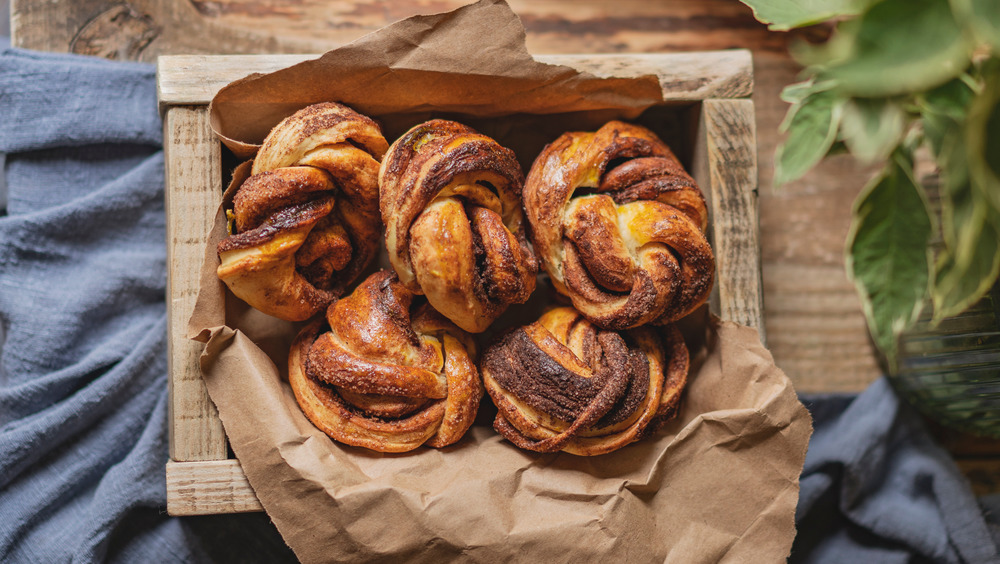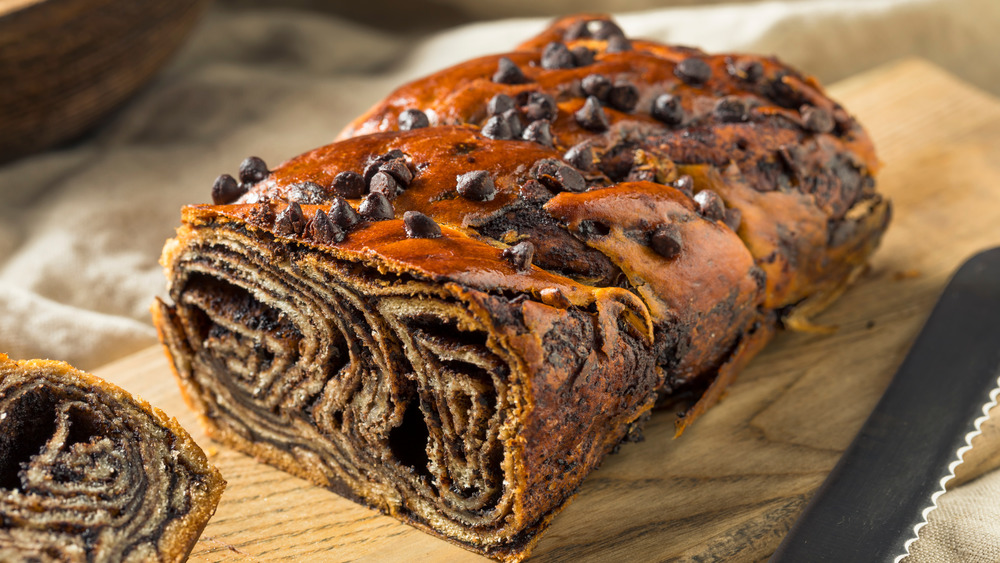What Is Babka And How Do You Make It?
Between cake and bread, babka, as Joanna O'Leary describes in My Jewish Learning, is a staple Jewish dessert that originated in Poland before spreading through the diaspora. At its most fundamental, babka consists of a twirled dough that is rolled and braided with some kind of filling. One Sarcastic Baker purports to share a traditional recipe for chocolate babka. The making of the dough follows a general dough making process, though the writer notes that the dough is quite delicate and not to be over-twisted. Making the chocolate filling consists of melting together the chocolatey ingredients and butter, and the babka is topped with streusel.
In recent years, the popularity of babkas has ballooned – due in part to Seinfeld, according to some people. The appeal has spread so far, in fact, that babkas have become one of those dishes for which people seem to design an endless list of recipes, such as the 10 variants offered by The Spruce Eats. These include an apricot and pistachio babka, a cheese babka, and a vegan babka with coriander, basil, and sour cashew cream.
The babka boom is based around a new kind of babka
The problem with citing Seinfeld as the spur for the babka's newfound celebrity is, as Sarah Jampel writes in Food52, that the episode aired 20 years before the boom on Instagram. Furthermore, the babkas that line shelves everywhere now are not like the rather undesirable babkas that delicatessen owner Peter Shelsky recalled eating in childhood.
The difference she discovered was that while non-Jewish babkas were made with butter, Jewish babkas used oil, making them firmer and drier. In 2013, however, the NYC-based Breads Bakery began selling their buttery babkas with Nutella spread. With some help from Zaria Public Relations to ensure the right people got their babkas, their brand became a sensation. New York Magazine, for example, declared that their babkas were the best in the city.
Jampel also notes that the rise of the babka coincides with the popularization of Instagram, a social media platform that seems made for the dramatic swirls contained within the babka. By the end of her piece, the tone leaves us with the feeling that even if these babkas have strayed from their traditional form, it doesn't matter. They taste better now, and the internet seems to agree.

